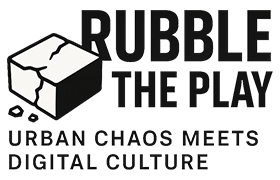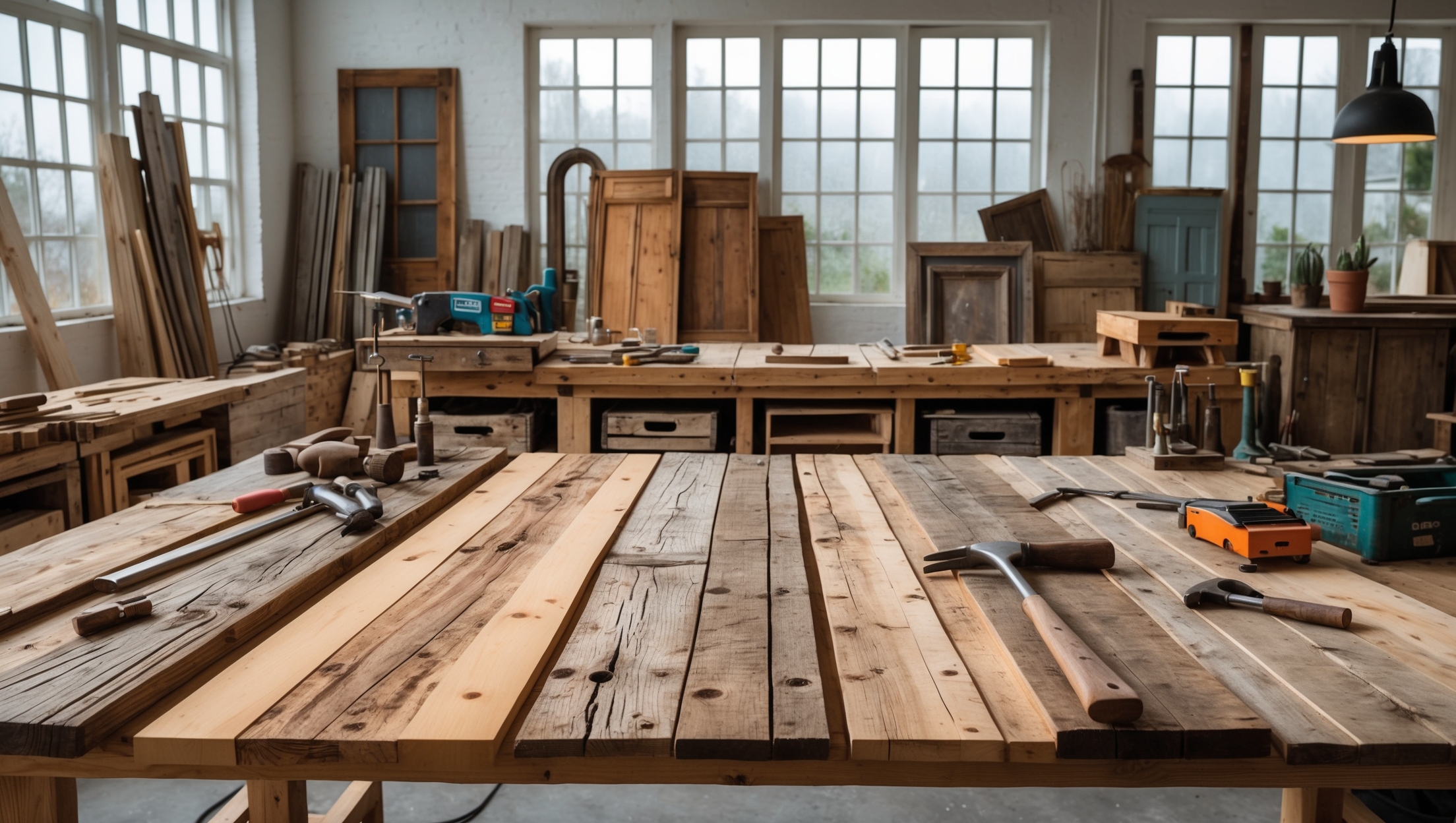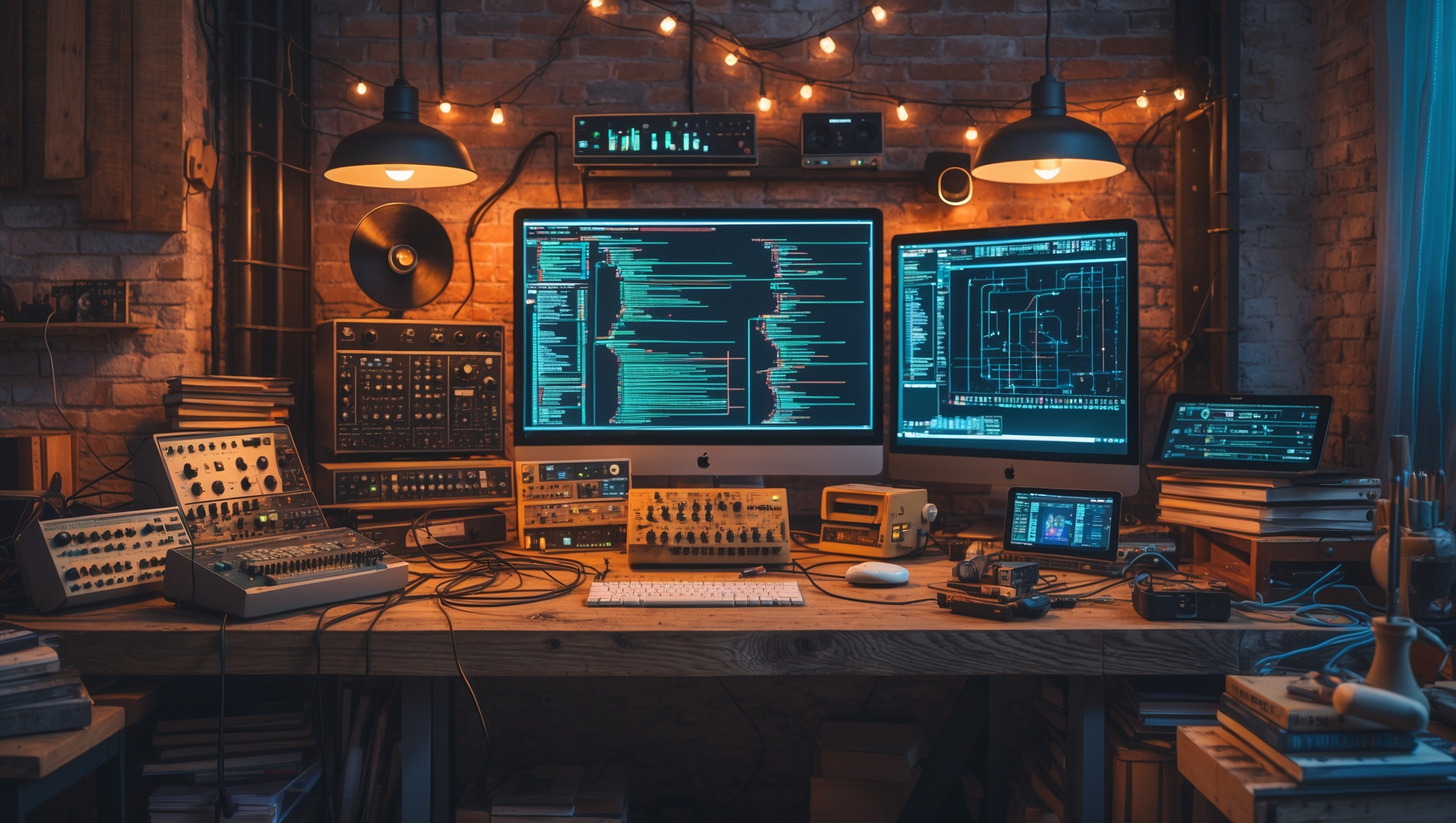Introduction: The Truth About Upcycling and Creative Salvage
Upcycling and creative salvage are more than just buzzwords—they’re cornerstones of a movement that blends craftsmanship, environmental stewardship, and resourcefulness. Yet, for newcomers and even seasoned tinkerers, myths abound. Is it really cheaper to restore than to buy new? Can anyone safely tackle restoration projects, or is it a job for professionals only? Does upcycling actually make a difference, or is it just a trendy hobby? These questions—and the persistent misconceptions behind them—can discourage would-be salvagers from picking up their first chisel or scouring the curb for hidden gems.
In this in-depth guide, we’ll dismantle the most common myths about upcycling and creative salvage. Whether you’re eyeing a battered dresser, a pile of old fence boards, or a box of mismatched hardware, understanding the realities of sustainable restoration empowers you to create, save money, and contribute to a greener world. Let’s separate fact from fiction so you can start (or deepen) your upcycling journey with confidence, clarity, and creativity.
Myth 1: Upcycling Is More Expensive Than Buying New
Breaking Down the Cost Equation
One of the most stubborn myths about upcycling is that it’s more costly than simply purchasing new furniture or décor. The reality is nuanced. While some initial investments—such as basic tools or safety gear—are necessary, ongoing costs are typically far lower than retail prices for comparable new items, especially when you factor in material quality and uniqueness.
- Material Sourcing: Salvaged materials are often free (curbside finds, construction site leftovers, donations) or inexpensive at thrift stores and architectural salvage yards.
- Tool Investment: Basic restoration tools (sanders, brushes, sealants) are a one-time cost and can be reused across projects.
- Long-Term Value: Upcycled pieces are often sturdier and longer-lasting than mass-produced goods, saving money over time.
The key is smart budgeting and knowing when to invest or improvise. Reusing and repurposing can be one of the most budget-friendly ways to furnish or decorate a space.
Myth 2: Upcycling Is Only for Artistic or Handy People
Skill Levels and Learning Curves
It’s easy to feel intimidated by Instagram feeds full of flawless upcycled furniture and intricate restoration projects. But upcycling isn’t just for the artistically gifted or the tool-savvy. In fact, the barrier to entry is much lower than many believe:
- Beginner-Friendly Projects: Simple tasks like repainting, adding new hardware, or reusing jars as storage require minimal skill.
- Online Tutorials: A wealth of step-by-step guides and videos are available for virtually every project type and skill level.
- Community Support: Local workshops, maker spaces, and online forums make it easy to ask questions and get advice.
Upcycling is about learning as you go. Every project adds to your confidence and toolkit, regardless of where you start.
Myth 3: Upcycled Items Are Flimsy or Poor-Quality
Assessing Durability and Material Strength
Some skeptics believe that upcycled goods are inherently less reliable than newly manufactured ones. In reality, many salvaged materials—especially hardwoods, solid metals, and vintage hardware—are superior to their modern equivalents. Here’s why:
- Material Quality: Older furniture and fixtures were often built from solid, high-grade materials no longer common in mass production.
- Restoration Techniques: Proper prep and finishing (cleaning, sanding, sealing) restore strength and longevity to salvaged pieces.
- Customization: You control the process, ensuring repairs are thorough and finishes are durable.
When done correctly, upcycled items can easily outlast cheap, store-bought alternatives—combining character with resilience.
Myth 4: Upcycling Isn’t Actually Sustainable
The Environmental Impact of Creative Salvage
Some critics argue that the environmental benefits of upcycling are overstated. However, numerous studies and real-world examples show otherwise:
- Waste Reduction: Upcycling keeps large, bulky items out of landfills, extending their useful life.
- Resource Conservation: Reusing materials means fewer new resources (wood, metals, plastics) are extracted and processed.
- Carbon Footprint: Upcycled goods require far less energy than manufacturing and shipping new products.
Even small-scale projects add up. Every salvaged chair, shelf, or fixture reduces your household’s environmental footprint.
Myth 5: Upcycling Is Dangerous and Involves Hazardous Materials
Safety, Hazards, and Practical Precautions
The idea that upcycling is inherently risky discourages many who might otherwise enjoy the craft. While safety is crucial, most hazards can be mitigated with straightforward precautions:
- Lead Paint and Asbestos: Older items may contain hazardous substances. Test and, if necessary, consult professionals for removal.
- Tool Safety: Use basic protective gear (gloves, goggles, masks), and follow manufacturer instructions for all equipment.
- Proper Ventilation: Work in well-ventilated areas, especially when sanding or using solvents and finishes.
With a sensible approach and a few safety basics, upcycling is as safe as any DIY hobby.
Myth 6: Upcycling Is Time-Consuming and Impractical for Busy People
Managing Time and Project Scope
Many believe that upcycling demands weeks of effort and endless weekends. In reality, project size is entirely up to you:
- Quick Wins: Projects like refinishing a small table, creating storage from crates, or updating hardware can be completed in a single afternoon.
- Batch Processing: Prepping several items at once (cleaning, sanding, priming) saves time and keeps momentum.
- Flexible Workflow: Upcycling fits into your schedule—work in short bursts or dedicate a weekend for larger undertakings.
By setting realistic goals and breaking projects into bite-sized steps, upcycling becomes a fulfilling, manageable hobby for even the busiest schedules.
Myth 7: There’s No Market for Upcycled Goods
Understanding Demand and Value
Some believe upcycled goods are hard to sell, or that there’s no demand for restored or repurposed items. The facts paint a different picture:
- Growing Consumer Interest: As sustainability awareness rises, so does the demand for upcycled, one-of-a-kind pieces.
- Platforms and Venues: Online marketplaces, local fairs, and pop-up shops make it easier than ever to reach buyers.
- Storytelling Value: The narrative behind each piece—its history, transformation, and eco-impact—adds to its appeal.
Whether as a side hustle or full-time business, upcycling has a robust and growing marketplace.
Myth 8: Only Certain Materials Are Worth Salvaging
Expanding Your Material Horizons
Some upcyclers limit themselves to wood or metal, believing other materials aren’t worth the effort. In reality, many overlooked items can be creatively and sustainably reused:
- Glass: Old bottles, jars, and windows can become vases, storage, or even lighting fixtures.
- Textiles: Vintage linens, curtains, and clothing can be repurposed into upholstery, tote bags, or wall art.
- Ceramics and Tiles: Broken ceramics make unique mosaics, and surplus tiles can be used for coasters or garden paths.
With imagination and a willingness to experiment, almost any material can find new life through upcycling.
Myth 9: Upcycling Requires a Dedicated Workshop
Making the Most of Small or Shared Spaces
Not everyone has a garage or basement to dedicate to creative salvage. The good news is, you don’t need one. Many upcycling projects can be tackled in small apartments, balconies, or even outdoors on a fine day:
- Portable Tools: Hand tools, compact sanders, and folding workbenches fit easily into closets when not in use.
- Protective Solutions: Drop cloths and cardboard protect floors and furniture during in-home projects.
- Outdoor Options: Weather permitting, patios, driveways, and parks are great places to sand, paint, or assemble projects.
Upcycling adapts to your living situation—no warehouse required.
Myth 10: Upcycling Is Just a Trend
The Enduring Value of Creative Salvage
Dismissed by some as a passing fad, upcycling has actually been practiced for centuries under various names—repair, restoration, resourcefulness. The difference today is our heightened awareness of environmental impact and personal consumption.
- Historical Roots: Our grandparents and great-grandparents routinely repurposed and repaired out of necessity.
- Modern Relevance: Today’s upcycling blends old-school thrift with modern aesthetics, creating lasting value.
- Community and Legacy: Upcycled pieces often become heirlooms, carrying stories and meaning through generations.
Upcycling is a philosophy, not a fleeting style. Its principles—waste reduction, creativity, stewardship—are timeless.
Conclusion: Empowered Upcycling Through Informed Choices
Creative salvage and upcycling are gateways to a more sustainable, personalized, and rewarding lifestyle. By dispelling persistent myths, you can approach your next project with realistic expectations, practical know-how, and a sense of adventure. Upcycling isn’t about perfection or professional credentials; it’s about giving materials new purpose, reducing waste, and expressing your unique vision in the process.
Whether you’re transforming a battered chair, reinventing glass jars, or salvaging architectural elements, remember that every small effort counts. The journey is as important as the result—each project teaches new skills, saves resources, and tells a story. Don’t let misconceptions hold you back. With the facts in hand, you’re equipped to create, restore, and inspire in ways that make a real difference for your home, community, and the planet.
Ready to start? Begin with what you have, stay curious, and let creativity guide you. The world of upcycling and creative salvage is wide open—and the only limit is your imagination.





I see that salvage yards and thrift stores can be good sources for inexpensive materials, but how do you make sure the salvaged wood or hardware is safe and in good enough shape for a restoration project?
When choosing salvaged wood or hardware, check for signs of rot, mold, or insect damage, and avoid pieces with deep cracks or warping. Clean everything thoroughly and consider sanding or treating wood to remove old finishes or contaminants. For hardware, look for rust or structural damage, and test moving parts. If unsure, consult a professional or use materials from reputable salvage suppliers with clear histories.
I was surprised to read that upcycled pieces can actually end up sturdier than mass-produced goods. For resale, how can I determine if a salvaged item is worth restoring in terms of both durability and potential profit, especially if I don’t have much experience yet?
When assessing a salvaged item for resale, start by checking its basic structure—look for solid joints, good materials like hardwood, and any signs of rot or damage. Research what similar restored items sell for to gauge possible profit. If you’re new, start small and track the time and costs involved in each project to better understand your potential return as you gain experience.
I’m interested in starting with upcycling, but I’m not sure how to tell if an old piece, like a dresser from the curb, is worth the effort to restore. Are there signs or criteria you recommend for deciding what’s salvageable and what’s not?
When assessing an old piece like a curbside dresser, check for solid wood construction, sturdy joints, and minimal water damage or rot. Avoid items with extensive mold, deep cracks, or warped frames, since these are harder to fix. Drawers should slide well and hardware should be mostly intact. If the structure feels stable and the flaws look cosmetic (like scratches or faded paint), it’s usually a good candidate for upcycling.
You discuss the upfront investment in basic restoration tools. For someone just starting out, what would a realistic budget look like to cover both tools and initial safety gear, and are there affordable alternatives for people on a tight budget?
For beginners, you can start with a basic toolkit and essential safety gear for around $50 to $100 if you shop smart. Look for sales, secondhand stores, or borrow tools if possible. Essential items include a hammer, screwdrivers, sandpaper, dust mask, gloves, and safety glasses. Many community workshops also offer tool lending programs, making it easier and more affordable to get started with upcycling.
I get that basic restoration tools are a one-time investment, but for someone just starting out, is it possible to put together a reliable toolkit on a tight budget? Are there any specific tools you’d recommend buying used or borrowing at first?
You can definitely assemble a reliable upcycling toolkit on a tight budget. Essential items like sandpaper, screwdrivers, and paintbrushes are often affordable new. For bigger tools such as power drills or saws, buying used or borrowing from friends or tool libraries is a smart move. Start with the basics and add specialized tools as your projects become more advanced.
I’m still a bit unsure about the initial investment you mentioned for upcycling tools and safety gear. Do you have any tips on assembling a beginner’s toolkit without overspending, or maybe a list of must-have tools for someone just starting out?
For beginners, it’s smart to start with a few basic tools: a hammer, screwdrivers, pliers, a handsaw, a tape measure, and sandpaper. For safety, pick up protective goggles and work gloves. Many hardware stores sell affordable starter kits, or you can find quality used tools at thrift shops. Start small, add as you go, and only buy what your first projects need.
I get that tool investment is mostly a one-time thing, but are there certain tools you’d recommend absolutely buying versus ones you could maybe borrow if you’re new to upcycling? What’s the best way to keep upfront costs low for beginners?
For beginners, it’s wise to buy essential hand tools like a hammer, screwdriver set, measuring tape, and a basic saw, since you’ll use them often. Specialty tools like power sanders or staple guns can usually be borrowed or rented at first. To keep upfront costs low, check local tool libraries, ask friends or family to borrow items, and look for secondhand tools at thrift stores or garage sales.
You talk about upfront investments in basic tools for upcycling, but I’m curious how quickly those costs are typically offset. For someone just starting out, do you have any advice on which tools are truly essential to buy first and which ones can wait until you take on more advanced projects?
Upfront tool costs for upcycling are often offset pretty quickly if you regularly take on small projects—sometimes within just a few projects, especially if you’re repurposing free or low-cost items. For beginners, focus on essentials like a good screwdriver set, measuring tape, basic saw, hammer, and safety gear. Specialty tools like power sanders or staple guns can usually wait until you tackle bigger or more complex projects.
I run a small furniture shop and am interested in upcycling curbside finds, but I’m worried about the initial tool investment mentioned in the article. Are there any recommended starter kits for basic restoration, or is it better to buy tools individually as needed?
If you’re just starting out, a basic restoration starter kit can be a good value, as it usually includes essentials like sandpaper, a putty knife, brushes, and sometimes a staple gun. However, many shop owners find it more practical to buy tools individually as projects demand—this way, you only invest in what you actually use and can upgrade quality over time. Consider starting with the basics and expanding as your needs grow.
I’m interested in upcycling but I’m concerned about the time commitment compared to just buying something new. Based on your experience, how much extra time does a typical restoration project take for a beginner, and are there ways to keep a project manageable?
For beginners, an upcycling project can take anywhere from a few hours to several weekends, depending on the item’s size and your chosen design. To keep things manageable, start with small projects like picture frames or stools. Plan your steps before you begin, gather all materials in advance, and keep your workspace organized. This way, you can enjoy the process without it feeling overwhelming.
I get that basic restoration tools are a one-time investment, but for someone just starting out, how much should I realistically budget for the essential tools and safety gear before upcycling actually becomes cheaper than buying new furniture?
For beginners, budgeting around $100 to $200 is usually enough to cover essential upcycling tools like screwdrivers, a sander, basic saws, paintbrushes, and safety items such as gloves and goggles. Quality secondhand tools can help lower costs. After this initial outlay, your expenses mostly go toward materials, making upcycling increasingly cost-effective with each project.
I’m curious about the safety aspect mentioned in the introduction. Are there certain upcycling or restoration projects that are actually too risky for beginners to try on their own, and if so, what kind of projects would those be?
Yes, some upcycling or restoration projects can be risky for beginners. Projects involving old paint that may contain lead, electrical repairs, or working with items like pallets that could have been treated with chemicals should be approached with caution or left to professionals. It’s also best to avoid using power tools with limited experience. Always research materials and techniques before starting a project to ensure safety.
You mention that salvaged materials can often be obtained for free or at a low cost from places like construction sites and curbside finds. Are there any legal or safety considerations to keep in mind when collecting materials from these sources, especially for beginners?
Absolutely, there are important legal and safety considerations. Always ask permission before taking materials from construction sites or private property, as taking items without consent can be considered theft. For curbside finds, ensure items are clearly discarded. Safety-wise, wear gloves and sturdy shoes, and inspect materials for hazards like nails, sharp edges, or toxic substances like lead paint. Beginners should research local regulations and prioritize personal safety when salvaging.
I’m interested in starting some upcycling projects at home, but I’m not sure where to find quality salvaged materials without spending too much time searching. Do you have tips for sourcing good materials locally, especially for someone who’s new to this and on a tight schedule?
Try starting with local thrift stores, community recycling centers, or charity shops, as they often have a steady rotation of items perfect for upcycling. Check neighborhood online marketplaces and apps for free or cheap items nearby—many people give away things like furniture or scrap wood. Also, keep an eye out for curbside discards on bulk trash days. This way, you can gather materials without spending too much time searching.